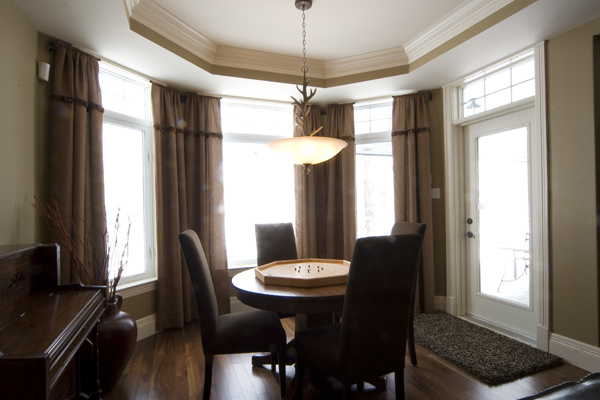Adding Unique Detail With Crown Moulding
If you’re looking to add unique detail to your home that mixes traditional with contemporary, crown moulding is an option that will stand out.
Crown moulding provides an elegant transition between wall and ceiling. Adding texture and character to a room, crown moulding can act as a decorative border, or alter the perceived shape of a room. If a room is tall and narrow, crown moulding makes the room appear higher and wider. However, it’s important to select the right crown moulding. If the moulding is too tall or too small, it can look out of place.
Sometimes thought of as an old-fashioned design element, new ways of manufacturing crown moulding have made more contemporary styles available. The selection of crown moulding is so varied that there are likely profiles to match any décor.
Many companies now make crown moulding in materials such as wood, plaster and high-density foam.
Wood moulding is the more traditional approach to crown moulding. It can be purchased in a variety of sizes and styles, and offers the solid, stable look that has been used in moulding for centuries.
Solid wood mills and carves into crisp edges, and hard woods like oak and mahogany stain beautifully, adding warmth to a room with its colour and grain patterns. Wood moulding creates a high-class look paired with any type of ceiling material.

Plaster moulding is constructed from a high-density polystyrene base, a cementitious base coat and a smooth acrylic plaster finish. These mouldings will hold their shape, and won’t warp, shrink, swell or crack.

High Density Foam moulding is lightweight and easy to work with. It’s not difficult to cut, like wood moulding, or causes messy installations, like plaster mouldings. High-density polyurethane mouldings are glued directly to the walls, lowering installation costs. These mouldings may not work well with textured ceilings.

Your builder can help you determine which type of crown moulding will work best with the style of your home and the materials within it.






Post your comment
Comments
No one has commented on this page yet.
RSS feed for comments on this page | RSS feed for all comments